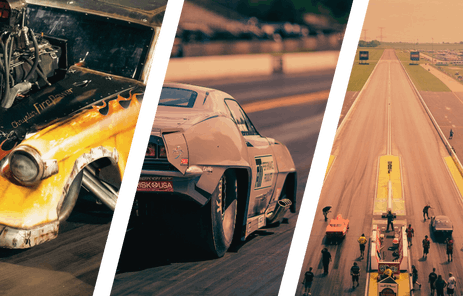
The last time we caught up with the team over at Tim McAmis Race Cars, they showed us a scoop on Mike Knowles’ absolutely incredible new ’67 GT500 Pro Mod. They’re back again, this time sharing a multi-part feature on Brian and Tyler Hard’s new 1968 V4 Pro Nitrous Camaro. We’ll be following along with the build from the initial planning stages all the way through the final paint and assembly, and here at Dragzine we’re proud to be the only place on the web you’ll find this story. Once we wrap up each phase of the build, we’ll then present a fell-fledged feature on the final product. But we’ve gotta’ start somewhere, so here we go!

This is the third car that Hard Racing has had built by McAmis, and the plan is to have it out in competition later this year. Of course, any complete-car build has to start with a solid plan, and that’s where the McAmis team’s expertise comes in. We caught up with Tim as he was on his way out the door to the NHRA race at Englishtown, and he explained some of the finer points of how his team goes about their business.
The car itself, as has been the tradition with any McAmis build, is an absolute work of art. The company starts off with a chassis table that has been precision-ground to within .001-inch, a tolerance that is incredibly important in providing a car that is square all around. The entire chassis is built on the table before the body is dropped onto the car, which will happen in the third installment of this build.
“Obviously, some of it depends on the racer’s budget, but it also depends on the type of project the customer is looking for. Our shop doesn’t really do a standard Pro Mod or Pro Nitrous-style car. Everything is built to the customer’s expectation of what they want from the car. Since we have Tyrant Productions led by Justin Spencer on location, we’re able to provide the conceptual drawings from the very beginning to the customer. We’re able to take their concepts from the start to the finish,” he explained.
As maintaining a light race weight is incredibly important in a class like this, the use of titanium in strategic places throughout the chassis is a hallmark of what helps to make a McAmis car so usable. Although 25.1E chassis rules require the use of 4130 chromoly in the cab and forward sections of the car, the McAmis team is able to install a titanium rear tail section, firewall, body mounts, and numerous other components that help make TMRC-built cars some of the lightest on the racetrack without sacrificing quality and longevity.
McAmis employs a number of specific ideas through the car’s build to make it easy for the end-user to work on and tune, including the adjustable upper strut mount cups. “These will give us the ability to change the ride height of the front of the car while maintaining the correct amount of piston travel in the strut body,” McAmis explains.
We want to go the extra mile and make sure the customer is satisfied with the end result. – Tim McAmis
One of the things that’s unique to the McAmis team and the way they go about constructing a car is that everything is done under one roof, from the aforementioned drawings all the way through the finished product – the chassis, the paint, even the composite bodies are produced in-house through their Velocity Composites division. They don’t have to outsource anything – all of the parts and pieces short of the actual engine and hard parts are produced in their machine shop; chassis brackets, wings, all of it is constructed by their craftsmen under McAmis’ watchful eye.
“There are two different types of projects. For example, with Mike Knowles’ car, he said, ‘Here’s what I like, do what you want’. We didn’t have to call him every step of the way and were able to do whatever we wanted to fit the car’s theme. He gave us the free reign to do what we thought was right,” Tim explains.
He continued, “On the other hand, if you take the Hard car, they know exactly what they want, they’ve been through this process with us a couple of times in the past, and they say ‘We want a lightweight Pro Nitrous car’, and I already know what they like in terms of options and complexity of the car. We base that all around having built the previous relationship up with the customers, how they race, and what they want. We can go off our past experience with them and turn the car into what they want.”

The body is also produced on-site in the Velocity Composites shop using a vacuum process. This process has been developed in-house over years of research and development. McAmis and his team appear to have the skills down pat as evidenced by the many high-quality cars that have won numerous events, set dozens of records, and taken home championships in the NHRA, ADRL, and other sanctions over the years. Each of the Velocity Composites technicians have years of experience with composites manufacturing – a process that is not for the faint-of-heart, as missing one little detail can result in a wrecked part that needs to be completely remade.

As you can see, building a top-notch machine like this is a complex process, and the McAmis team has it down to a science. Stay with us through the rest of the build over the coming weeks to see even more behind-the-scenes details and top-notch fabrication.
You might also like
PRI 2025: Andy Mcpherson's Awesome Coyote-Swapped GMC Syclone
Andy Mcpherson didn't want to build your average GMC Syclone. His truck is powered by a Ford Coyote engine.


